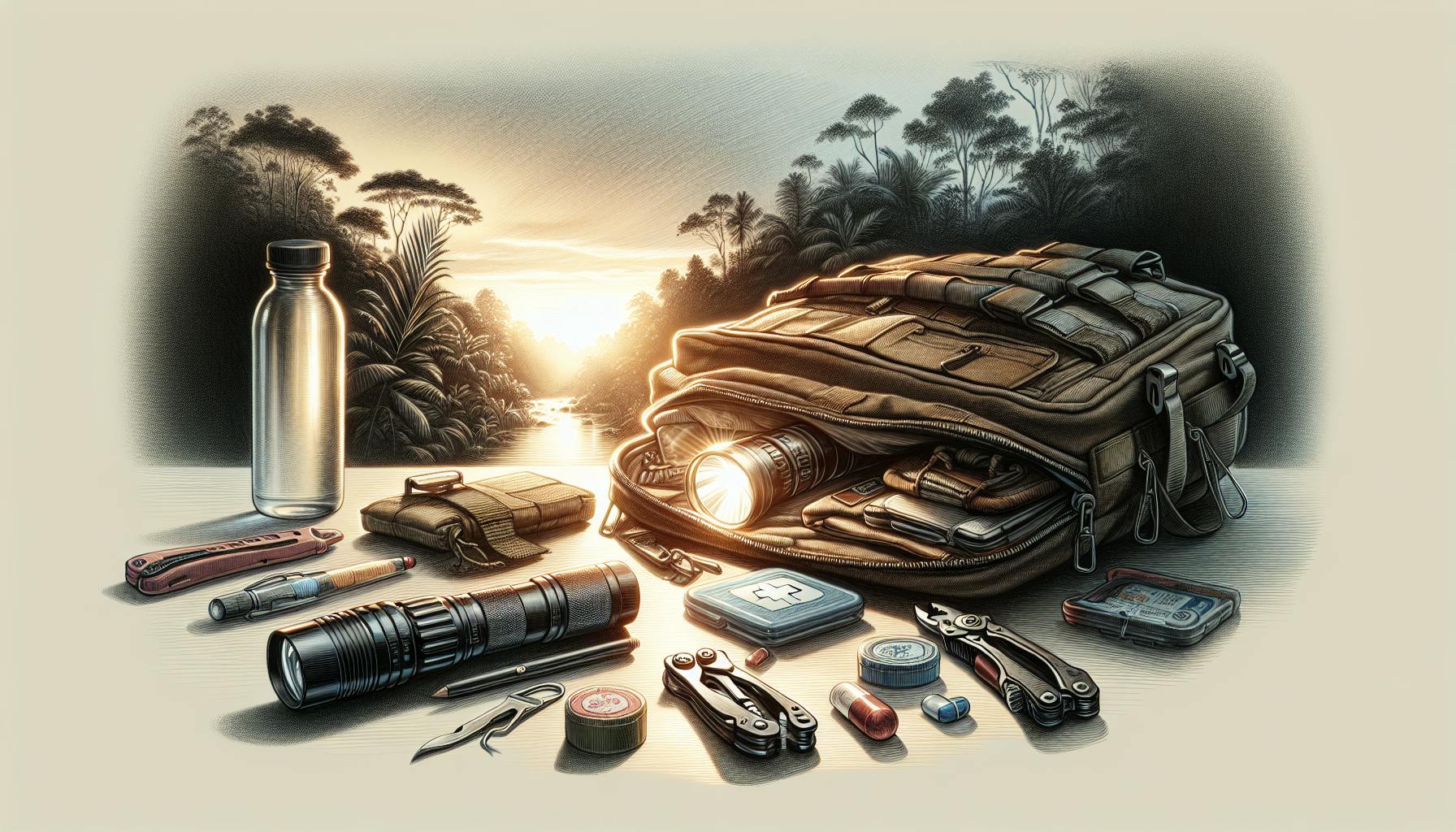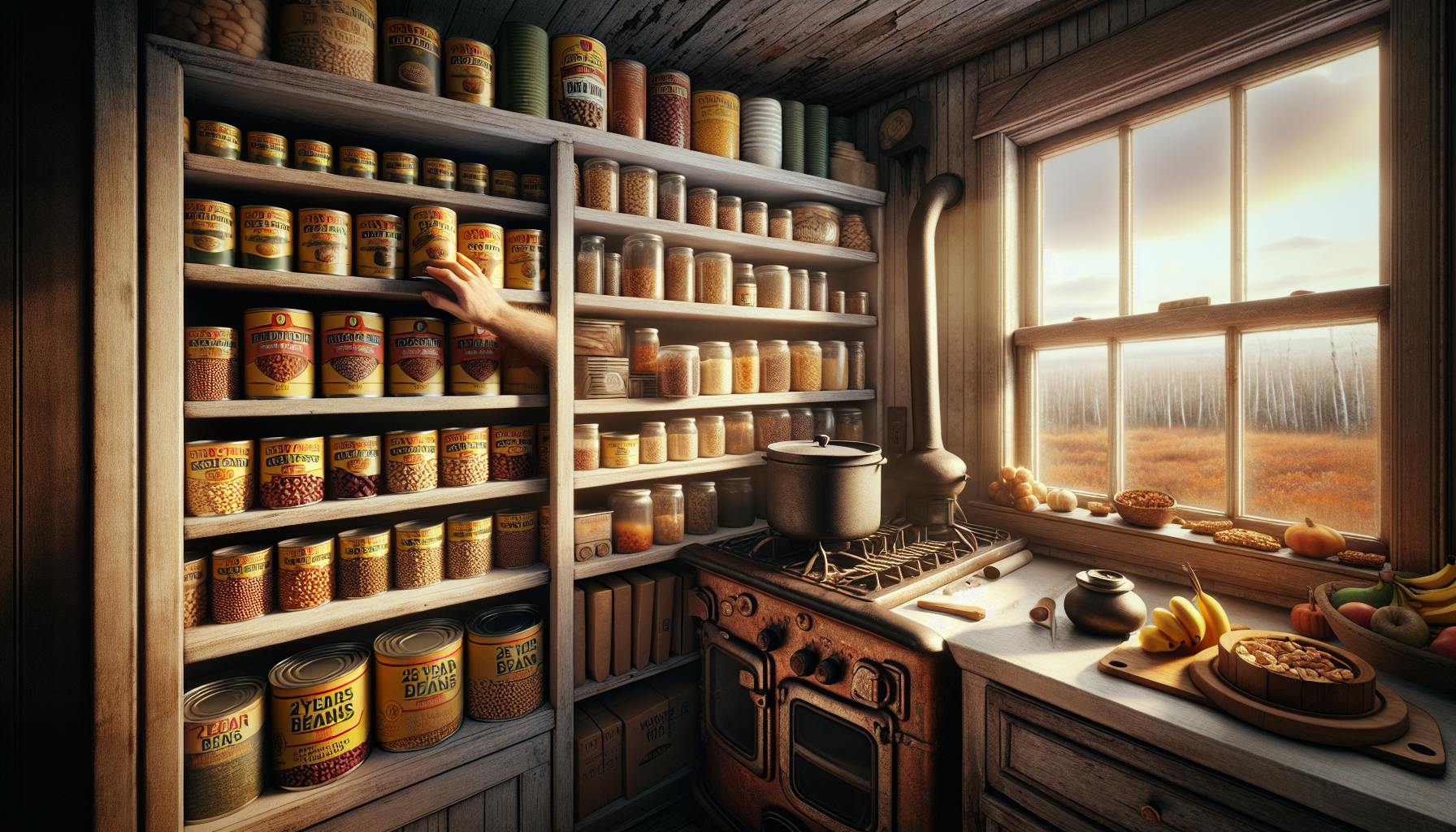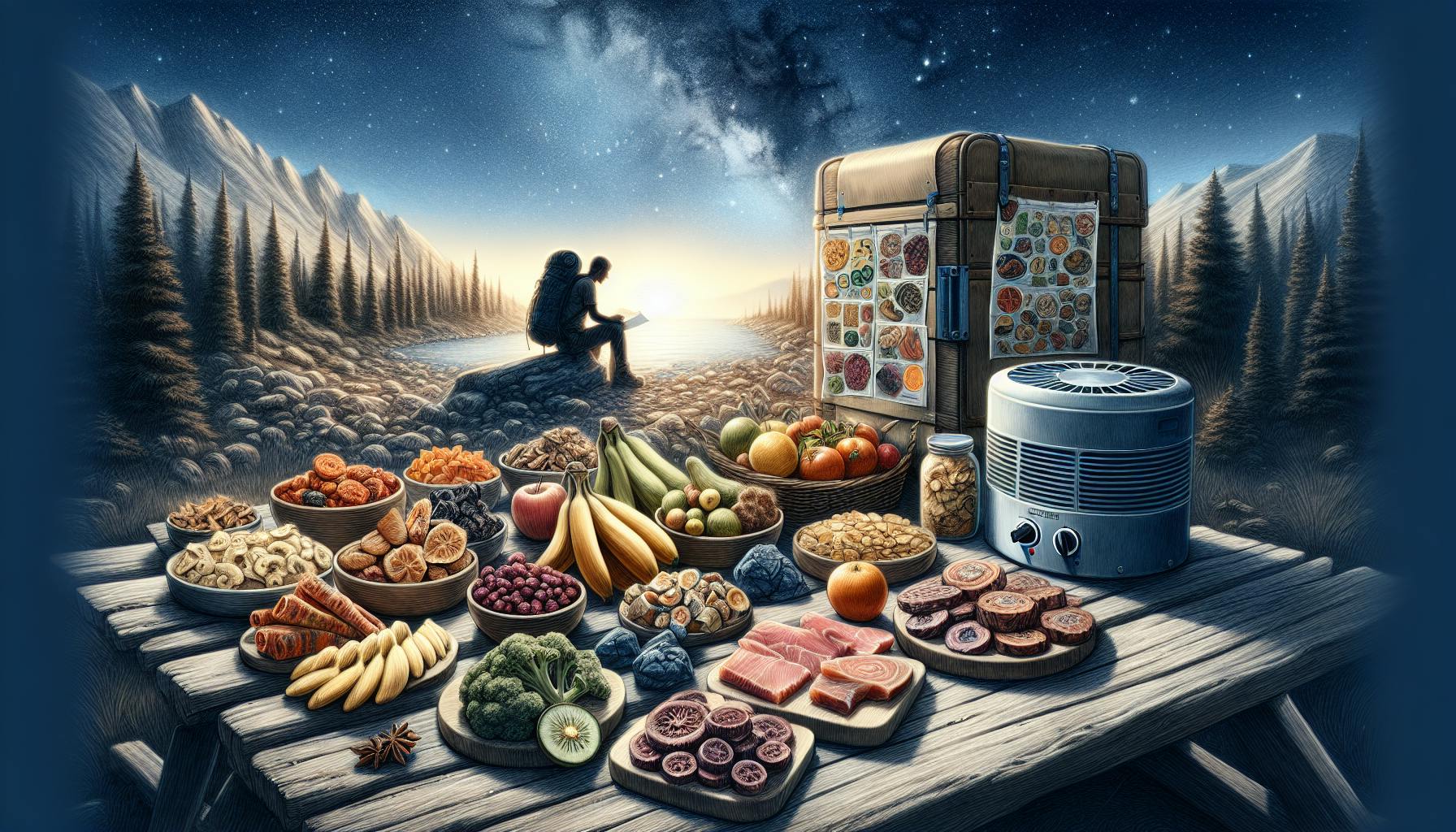When preparing for emergencies, we all want the best value for our money when stocking up on survival food.
In this cost comparison of top emergency food providers, you'll discover the most cost-effective options based on price per serving, bulk pricing, and overall nutritional value.
We'll evaluate brands like Mountain House, Legacy Food Storage, and survival food kits to help you make an informed decision on the best survival food company for your needs and budget.
Introduction to Emergency Food Preparation
Emergency food preparation is crucial for disaster preparedness. Having a reliable food supply in the event of natural disasters, civil unrest, or other emergencies allows you to shelter in place (bug in) or evacuate (bug out) with confidence. When choosing an emergency food supply, key factors to consider include shelf life, nutritional content, taste, and cost effectiveness.
The Role of Food Storage Companies in Disaster Preparedness
Food storage companies specialize in creating emergency food kits designed to last for years or even decades. This makes them invaluable partners for preppers assembling bug out bags, putting together emergency pantries, or generally preparing for SHTF scenarios. Leading food storage brands like Mountain House and Legacy Food Storage offer a wide selection of freeze-dried meals, drink mixes, grains, and snacks. Their products are carefully engineered and tested to remain edible and nutritious for 25+ years.
Partnerships with food storage companies ensure preppers have a reliable food supply to outlast temporary disruptions or long-term societal breakdowns. Whether you need supplies for a 72-hour bug out bag or a 20-year shelter-in-place stockpile, they provide tasty, nutritious options engineered specifically for emergencies.
Understanding the 25-Year Emergency Food Supply
When disaster strikes, you can’t count on normal food supply chains remaining intact. A 25-year emergency food supply provides total assurance that you will be able to feed yourself and your family, regardless of circumstances.
Legacy Food Storage, Mountain House, and other top emergency food brands use advanced freeze-drying techniques to completely remove the water content from meals, fruits, vegetables, and more. This prevents spoilage and nutrient degradation for decades. Just add water, and these high-quality ingredients spring back to life, delivering the same fresh taste and nutritional value as the day they were packaged.
With a properly stored 25-year food supply, you can shelter in place with total confidence as disasters and interruptions come and go. It’s the ultimate insurance policy for uncertain times.
Nutritional Considerations for Prepackaged Food
When relying on emergency food supplies for extended periods, nutritional balance is essential. Thankfully, many leading food storage companies offer meal plans and bulk ingredients designed to deliver complete, healthy nutrition for years at a time.
Rather than just packing away random assortments of freeze-dried food, smart preppers invest in balanced meal plans including proteins, fruits, vegetables, grains, and more. This ensures that all macro and micronutrient needs can be met, staving off malnutrition. Some kits even include vitamin supplements to provide further nutritional insurance.
Taste is also vital for long-term consumption. Look for brands that use high-quality ingredients and advanced freeze-drying methods to deliver appetizing textures and flavors. Mountain House meals, for instance, are celebrated for tasting like fresh-cooked food. When your survival depends on it, premium flavors make all the difference.
Price Per Serving: Balancing Cost and Nutrition
With some bulk ingredients costing over $1 per serving, while others cost just 10-25 cents, price per serving is hugely variable when comparing emergency food brands. Generally, ingredients like white rice, beans, oats, and pasta provide the most calories per dollar due to their low cost, long shelf life, and nutritional content.
However, relying solely on grains and starches can lead to vitamin and mineral deficiencies over time. That’s why many preppers pair budget bulk ingredients with smaller quantities of pricier freeze-dried fruits, vegetables, and meats to balance taste, nutrition, and cost effectiveness.
When doing the math, keep both the cost per serving and the nutritional profile in mind. Find an appropriate balance based on your budget, intended duration of emergency usage, and the size of your family. With some savvy planning, you can build an emergency food supply that’s affordable, delicious, and nutritionally complete.
What brand is best survival food?
When it comes to the best survival food brands, there are a few top contenders to consider. Some of the most popular and highest rated options include:
Mountain House
Mountain House is one of the leading brands when it comes to freeze-dried and dehydrated meals. They offer a very wide selection of entrees and side dishes that have an impressive shelf life of up to 30 years. Their food is lightweight, easy to prepare, and tastes great. Mountain House gets consistently positive reviews from preppers.
Augason Farms
Augason Farms specializes in emergency food kits with a diverse range of entree options and ingredients. Their food comes in #10 cans with an up to 25 year shelf life. Augason Farms offers some of the most affordable bulk pricing on survival food. They also sell smaller starter kits for those just getting into emergency preparedness.
Legacy Premium
Legacy Premium creates gourmet, restaurant-quality meals that come freeze dried in resealable pouches. While the taste is excellent, Legacy Premium is on the pricier side. Their food storage buckets provide up to 25 years of shelf life.
Wise Food Company
Wise Food Company offers 60 Serving "Grab and Go" Kits with convenient individual pouches of foods like pasta, rice, and oatmeal. For longer-term bulk storage, they sell packages with 120-720 servings. Wise Food Company provides very competitively priced survival food.
When choosing the best survival food brand, consider your budget, taste preferences, shelf life needs, and what food types fit your disaster plan. Testing different brands can help find one whose meals you enjoy and that offers the right balance of features for your situation.
What is the best food for long-term preppers?
When it comes to long-term food storage for preppers, the most cost-effective and shelf-stable options are bulk quantities of staples like wheat, corn, beans, and salt. Here's a quick overview:
-
Wheat - Hard red wheat or white wheat berries can be stored for 30 years or more if properly packaged and stored in a cool, dark place. Wheat can be ground into flour for baking or cooked as-is to make dishes like wheat berries or cracked wheat.
-
Corn - Dried corn kernels store well long-term and can be ground into cornmeal, turned into hominy, or used to make grits. Look for non-GMO heirloom varieties.
-
Beans - Dried beans like pinto, black, kidney, garbanzo, etc. can easily be stored for 10+ years. They are packed with protein and pair well with other staples.
-
Salt - Essential for flavor and nutrition. Get coarse kosher salt without additives, which stores indefinitely.
The key is that these staples nicely complement each other nutritionally. Eating them together ensures you get complex carbs from the wheat and corn, plus protein from the beans. The salt rounds out electrolytes and flavor.
Just a small daily serving of each provides solid nutrition. Stored properly in mylar bags and food-grade buckets, they'll outlast almost any disaster or societal disruption imaginable.
So if you're prepping for the long haul, load up on buckets of these tried and true staples!
What is the best food to stock up on for emergencies?
When stocking up on food for emergencies, it's important to focus on non-perishable items that have a long shelf life and provide nutrition. Some great options to consider include:
- Canned goods like chili, soup, spaghetti sauce, vegetables, and fruits. Look for low-sodium options.
- Whole grains like brown rice, quinoa, oats, and pasta
- Dried beans and lentils
- Nut butters and nuts like almonds, walnuts, and peanut butter
- Canned proteins like tuna, salmon, chicken
- Comfort foods like granola bars, crackers, trail mix
- Powdered milk, shelf-stable milk like almond or soy
- Water and water flavorings
When buying canned goods, make sure to get pop-top lids so you don't need a can opener. Also, create a rotation system so you don't end up with expired food. Try to eat and replace items in your emergency food supply before their expiration date.
Having a variety of foods ensures you get balanced nutrition. Combine items like beans and rice for complete protein. Supplement with multivitamins if your diet lacks fresh produce. Staying nourished is key in stressful situations.
With the right emergency food supply and rotation system, you can be confident you have reliable, healthy options if disaster strikes. Focus on nutrient-dense non-perishables tailored to your family's needs.
sbb-itb-b932644
What are the best freeze-dried food companies?
When it comes to freeze-dried survival food, there are a few major players that stand out from the rest in terms of quality, taste, and cost-effectiveness. Here's a quick rundown of some of the best options on the market:
Outdoor Herbivore
Outdoor Herbivore is widely considered one of the best overall freeze-dried food companies. Their meals feature high-quality ingredients, robust nutrition profiles, and great taste. The taste is surprisingly fresh and flavorful compared to many freeze-dried options. They offer meal kits for backpacking as well as bulk buckets for long-term food storage. Their products do come at a premium price point, but customers feel it’s worth it.
Next Mile Meals
Next Mile Meals offers premium freeze-dried foods, focusing specifically on paleo, keto, and specialty diet offerings. They use organic produce and clean protein sources. Their unique meals reflect diverse flavors from around the world. The taste gets rave reviews, though portion sizes run on the smaller side. The price per serving lands on the higher end as well.
Wild Zora
Specializing in meat-centric and paleo offerings, Wild Zora produces high-quality freeze-dried backpacking meals and survival food kits. Their products feature grass-fed and finished meats as well as organic produce. Taste and texture get high marks from customers. They offer meal kits, buckets, and #10 cans for bulk emergency food storage. However, costs run on the steeper side.
Mountain House
You can find Mountain House freeze-dried foods nearly everywhere, from big box stores to specialty outfitters. They dominate the market in terms of availability and variety. While not the most gourmet, their meals fill you up and provide the basic nutrition you need. Taste is on par with most options in this price range. Mountain House offers affordable prices for those on a budget.
Harmony House
Harmony House is a great option for bulk ingredients to assemble your own meals, offering the best value for freeze-dried produce, meats, grains, and components. You can buy affordable food staples in bulk to create complete meals. This allows you to customize recipes to your dietary needs. However, it requires more effort compared to pre-made meal kits.
Evaluating Best Survival Food Companies 2023
Mountain House Survival Food: A Benchmark for Quality
Mountain House is one of the most trusted brands when it comes to emergency food supplies. They offer high-quality ingredients and convenient preparation, with meals that have a 30-year shelf life. Their food tastes delicious while providing balanced nutrition.
Some key benefits of Mountain House meals include:
- Great taste from quality ingredients
- Long 30-year shelf life
- Easy preparation by just adding hot water
- Balanced nutrition profile in each meal
- Positive reviews from customers
One downside is that their products tend to be more expensive than competitors. However, many customers feel the quality and taste makes it worthwhile.
Legacy Food Storage: Organic Options and Sustainability
Legacy Premium emergency food also earns high marks for taste and quality. Their ingredients are 100% GMO-free and meals have a 25+ year shelf life.
Benefits of Legacy Food Storage include:
- Organic, non-GMO ingredients
- Great taste comparable to homemade meals
- 25+ year shelf life
- Environmentally-friendly practices
- Gluten-free and vegetarian options
One tradeoff is Legacy's premium organic ingredients come at a higher price point. But customers praise their ethical, sustainable practices.
Best Survival Food Company Reviews: Customer Insights
By analyzing customer reviews across brands, some key factors emerge for the best survival food companies:
- Taste - Strong flavors, seasoning, texture
- Easy Preparation - Just add hot water
- Shelf Life - 20-30 years
- Nutrition - Balanced macros and calories
- Value - Quality relative to price
Top-rated brands like Mountain House and Legacy Food Storage tend to excel in these areas. Preparing samples yourself can help assess which tastes and textures you prefer.
Survival Food Kits: Prepackaged Convenience
Survival food kits provide another convenient emergency food option. These prepackaged sets give you meals, snacks, and drinks in one portable kit.
Benefits of survival food kits:
- Grab-and-go convenience
- 1-week to 1-month supply options
- All-inclusive meals and snacks
- Easy to store, transport, and evacuate
Just be aware that taste and nutrition can vary more between basic and premium kit options. But for ease of use, they offer reliable short-term preparedness.
Cost Analysis of Emergency Food Options
When preparing for an emergency, having a supply of survival food is essential. However, with many options available, it can be tricky to determine what offers the best value. By comparing price per serving, bulk pricing, and overall nutritious quality, preppers can find the most cost-effective emergency food.
Price Per Serving: A Detailed Breakdown
When comparing survival food brands and products, looking at the unit price per serving or per day's worth of food is important. This allows an apples-to-apples comparison, regardless of package size. Some key factors to consider:
- Mountain House pouches contain 2 servings and cost around $7-8 per pouch. That equates to $3.50-$4 per serving.
- Legacy Food Storage buckets cost $120-150 and contain 60 servings. That breaks down to $2-$2.50 per serving.
- Bulk cases of food with 100-200 servings often cost $200-300. The per serving price can be as low as $1-1.50.
Tracking prices this way shows the savings when buying larger bulk quantities.
Bulk Options for Preppers: Maximizing Value
Opting for full bulk cases with 50-200 servings can save up to 35% compared to buying individual pouches or buckets. For example:
- A case of 100 servings from Emergency Essentials costs $230 ($2.30/serving).
- Buying 10 individual 10-serving buckets would cost $300 ($3/serving).
The case saves 23% over the individual buckets. The more you buy, the more you save.
Best Organic Emergency Food Supply: Cost vs. Quality
Organic food does often cost more than conventional. However, focusing on quality over quantity can be worthwhile for some preppers. Some top organic options include:
- Wise Food Storage organic buckets at $150 per 60 servings ($2.50/serving)
- Augason Farms organic canisters for $100 with 30 servings ($3.33/serving)
The higher cost balances out if nutrition and ingredient quality are top priorities.
Cost-Effectiveness for Long-Term Storage
For long-term food storage spanning 10-25 years, bulk cases provide the most cost savings. A 25-year supply of 3 meals per day for 1 person can cost $5,000-$10,000. Seems expensive, but it breaks down to $7-$14 per week when amortized over 25 years. Also, the food will likely last even longer than the 25 year shelf life if stored properly. So the investment pays off exponentially over time.
Selecting the Best Survival Food Provider for Your Needs
When selecting a survival food provider, it's important to consider factors like shelf life, taste, nutrition, ingredients, and affordability.
Nutritional Profile: Meeting Dietary Requirements
Look for products that offer complete nutrition with healthy fats, protein, and complex carbs. Prioritize options that are gluten-free, non-GMO, and free of artificial ingredients. Mountain House and Legacy Premium products typically have better nutritional profiles compared to cheaper brands.
Taste and Quality: The Mountain House Edge
Mountain House and Legacy Premium products generally have better taste and texture due to higher quality ingredients. Cheaper survival food brands often compromise on taste.
Bulk Purchasing: Assessing the Best Deals
Purchasing survival food in bulk can provide cost savings. Calculate price per serving when comparing deals. Consider your storage capacity. Buying 6 months to 1 year supply at once provides good value.
Shelf Life Considerations: Ensuring Longevity
Look for 20-30+ year expiration dates if unopened and stored properly in a cool, dry place. Mountain House and Legacy Premium offer 25-30 year shelf lives for most products.
Conclusion: Making an Informed Decision on Survival Food
When selecting a survival food company, the most important factors to consider are quality, cost, and shelf life. By comparing options across these key areas, preppers can make an informed decision to get emergency food that meets their budget, tastes good, and will last as long as needed.
Summarizing the Best Survival Food Companies
The top-rated survival food companies offer tasty meals and snacks that provide balanced nutrition for short or long-term emergencies. Mountain House and Legacy Food Storage have affordable bulk options with decades-long shelf lives.
Final Thoughts on Cost-Effectiveness and Value
Getting the best deal involves balancing cost per serving, bulk order sizes, and shelf life. Larger upfront purchases often provide better savings and enough food for extended crises. Prioritizing quality ingredients also ensures meals are appetizing and nutritious when it matters most.
Recommendations for Preppers and Emergency Planning
Those creating a robust preparedness plan should consider having at least a 3-month supply of survival food for their household. Bulk buckets with individually sealed pouches make for easy storage and portability if evacuation becomes necessary.
The Importance of Regularly Updating Your Food Storage
As survival food reaches its expiration date, preppers should incorporate the oldest items into their regular diet and replace them. This rotation system ensures freshness and avoids wasting resources.


